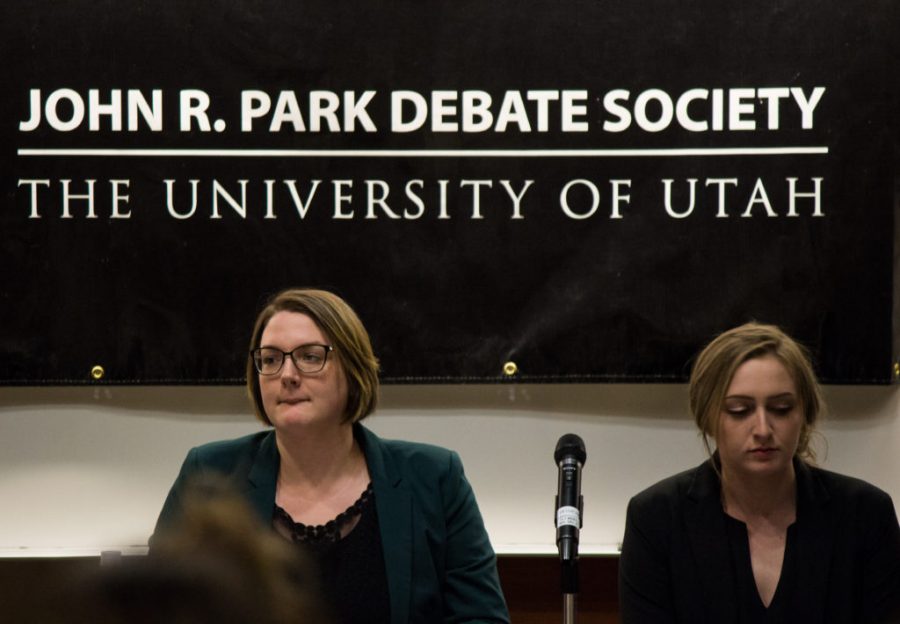Students on the University of Utah’s debate team held a heated discussion on Wednesday about one of the most controversial topics on campus — the circle and feathers logo and labeling students at the Utah “Utes.” The name is appropriated from the Ute people who are indigenous to the Great Basin area, and the logo is sacred symbolism used by numerous federally-recognized American Indian tribes. The event featured a debate between team members and a public discussion on the topic.
On one side, debaters Saige Miller and Courtney Nilson supported eliminating the use of “Utes” as a nickname and throwing out the circle and feathers logo. Gabriela Piril and Bryson Griffith opposed the move. All four students are award-winning debaters.
The public discussion was led by Danielle Endres, who is a doctor of philosophy with substantial knowledge of social movements, including those involving Native Americans. She headed the Utes Nickname Project, which worked to develop a better understanding of the U’s history of using Native American symbols and how it influences discussion around issues of appropriation at the U.
Appropriation of Native American symbols has been a major debate on college campuses. Some universities — including the Stanford University, Dartmouth College, the University of Illinois and North Dakota State — have moved away from Native American mascots and symbolism with varying degrees of success.
Although the U borrows symbolism from the Utes, the university has a Memorandum of Understanding (MOU) with the tribe that allows the U to use the title provided they follow through with commitments made in the document. The MOU, however, does not give the U permission to use the circle and feathers logo. Scholarships have been set aside for members of the Ute tribe to attend the U and measures have been taken to support indigenous students on campus.
Miller said in her introduction “The usage of the Ute nickname and logo is a continued agreement between the U and the Northern Ute tribe only.” In addition to the Northern Utes, there are Mountain Utes and Southern Utes who are not part of the memorandum.
Griffith rebutted this point explaining, “The U is cited as providing support to the entirety of the Ute Indian tribe, despite whatever section they come from.”
Another concern held by the team supporting the U’s rebranding was the unsafe environment and behavior fostered by incorrect portrayals of indigenous behavior and clothing. They argued that microaggressions and other racist behaviors are encouraged by the appropriation of Ute culture at the U.
The defensive team added that the MOU between the U and the tribe have ensured that in any cases in which headdresses, ceremonial clothing, or otherwise offensive clothing or activities are worn or done, it will result in punishment up to the level of expulsion, in some cases.
The team in favor of preserving the status quo said, “If we reject the nickname we delegitimize the Ute tribe’s ability to associate itself with the university.” In other words, getting rid of the MOU and rebranding would eliminate Utes’ power to make conscious decisions about their culture and how it is viewed by the world. It would also pull scholarship support for members of the tribe.
NOTICE: This article previously stated that Franci Taylor of the American Indian Resource Center spoke at the event, but she was unable to attend. The circle and feathers logo was incorrectly referred to by the colloquial term — drum and feathers. The University of Oregon was incorrectly listed as having formerly had a Native American mascot. The MOU does not give the U permission to use the circle and feathers logo, as was previously written.
c.macdonald@dailyutahchronicle.com


